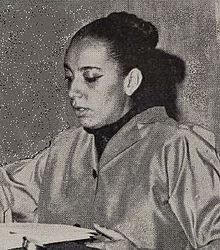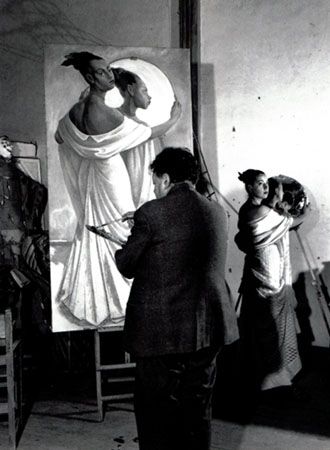Iman Yehia’s The Mexican Wife is a whodunit that looks for the “truth” of Yusuf Idris’s life story while simultaneously inventing its own:
By Gretchen McCullough


James Frey’s true story has become legendary, especially among American writers:
In 2003, James Frey wrote a memoir called A Million Little Pieces about drug addiction, crime and the road to recovery. Readers swallowed every word — just as those who believed the story of Jonah and the whale. The book sold eight million copies. At first, the publishers thought they had hit the jackpot.
But wait…
A number of witnesses came forward to testify that Frey was not the bad boy he claimed to be — he had told a fib or two about his experience as an “addict.” Readers felt cheated — and angry.
The contract stipulated that he was selling a “memoir or a true story,” not a novel, which was what he had written.
Frey thought he might profit more from selling his book as “a true story,” rather than a novel. And, of course, he was right. “True stories” tyrannize the American publishing market, in a way that boggles the imagination, ranging from the gratuitously bizarre to the utterly trivial. On GoodReads, I found twenty memoirs about “fat girls.” (Alas, a few did not reform despite their lengthy confessions.) Yet the “Best Strange and Twisted Memoirs” trumped “fat girls.” There were memoirs on twins separated and united, memoirs on anorexia and bulimia, memoirs on tattoo artists, to name a few.
Many readers think a “true story” must equal a “good story.” Frankly, this is a misunderstanding of literature and the art of storytelling, the mainstay of which is calculated fabrication fuelled by the imagination.
In 2003, shortly after I had returned from Syria on a Fulbright, I went to the Breadloaf Writers’ Conference in Vermont. A literary agent who was lounging on the front porch asked me if I had a “traumoir.” No lie — his name was Damon Quisling — a name easily plucked from Henry Fielding or Charles Dickens. Yet here he was, in the flesh, gazing at me with disdain. “You know, trauma and memoir.” I had a collection of essays about my experience as a Fulbrighter, living in Lattakia, Syria. Barely stifling a yawn, he said, “Big houses won’t be interested in essay collections unless you’re famous.” He was sure I was not, or he would already have heard of me, but he still graced me with his card.
Later, that night, I briefly considered an overdose of sleeping pills after I finished slogging my way through the manuscripts for my nonfiction workshop. The confessions were so raw I wondered if I dare scribble in the margins. For example, how would I advise a lesbian who was describing how to impregnate herself with a turkey baster full of sperm about how to make her “true story” better? Or how would I comment on the story of a woman who described herself being sexually abused by her father when a small child? Craft met the sensitivity of the material at an awkward juncture — I felt bewildered and alienated. I was the only one in a class of twelve or thirteen who was writing about the experience of living outside of the United States. Even describing Hafez Al-Assad’s draconian rule and my adventures in Syria were not sensational enough: I had not, for instance, been kidnapped by terrorists.
Egypt’s literary scene is also ruled by trends. After the 2011 uprising, there was a deluge of memoirs in the market. Now, it’s cool to write dark dystopias. A novel that bucks these trends is Iman Yehia’s Al-Zawga Al-Mexikia, The Mexican Wife.
Iman Yehia’s novel, longlisted for the 2019 International Prize for Arabic Fiction, was inspired by “a true story” about two famous people. In an interview with ArabLit, Yehia mentioned that he discovered that the famous Egyptian fiction writer and playwright, Yusuf Idris, was briefly married to the daughter of the famous painter, Diego Rivera — an interesting, little-known fact — in a book by a Soviet Orientalist. While Yehia’s research for his novel included Egyptian Communists’ court cases, memoirs of Diego Rivera and Ruth’s mother, Guadalupe Marin and Ruth’s son, Pedro, the novel is not enslaved by the “true story,” but rather an imaginative reply to Yusuf Idris’ novel al-Baidaa’, or The White Woman.

At the beginning of his novel, Iman Yehia includes Diego Rivera’s painting of his daughter, Ruth, looking at the viewer, her image reflected in a mirror. The following page is a photograph of Diego Rivera painting his daughter, his back to the camera, focused on the canvas — we see Ruth, posing for her father to the side. In a way, the novel does something similar, playing with a verisimilitude of reality and art.
The Mexican Wife begins in the present with a visit from an American student, Samantha Davis, of mixed Mexican and Egyptian background, to an Egyptian professor, Dr. Samy. The latter is an expert on the writer, Yehia Mustafa Taha, who is really the famous Egyptian writer Yusuf Idris. The American student challenges the middle-aged Dr. Samy to re-examine what he thinks about the author’s life — that is, the life of Yusuf Idris — and the novel, The White Woman. Previously, the professor had assumed that the prototype of the main female character, Santi, was Greek because there was a large Greek community in Egypt.
Iman Yehia’s novel, The Mexican Wife, turns into a literary whodunit, propelled by a quest for the truth about Yusuf Idris’ past. Idris — and good for him — was creatively untrue. The professor’s attraction to his student, Samantha, is also intertwined with the hunt for the truth about Idris’ real life. The novel alternates between the professor in the present and Yusuf Idris and Ruth Rivera in the past: how they met at the Congress of the People’s for Peace in Vienna in 1952 and their brief life together in Cairo. Yet later in the novel, the professor considers that Idris might have merged a Greek “comrade” with the character of Ruth, in order to camouflage what would have been a Communist scandal. What else should he have done as a novelist?
The passage of time has given Iman Yehia an edge over Idris’ interpretation of politics in El-Baidaa. While Yehia Taha is in Europe, he hears the news from Radio London about sweeping arrests, the termination of political parties, and a three year transitional period. He is devastated by this news. The novelist imagines a conversation between his character, Yehia Taha, and the painter, Diego Rivera. Rivera asks him, “Are you sure you aren’t facing a dictatorship?” Rivera’s question would be prophetic. In 1953, a new Constitution was established, which gave the new leaders free reign, without any oversight from the other branches of government.
The most compelling chapters of The Mexican Wife are those that focus on the fictitious relationship between the writer Yehia Taha (Yusuf Idris) and Ruth Rivera during the fifties, rather than the relationship between Dr. Samy and Samantha, set a few years before the 2011 uprising. While one can understand how a lonely, middle-aged professor might be tempted by a charming young woman passionate about research, the character of Samantha is the stereotype of a foreign woman, and she seems only to serve the plot. Iman Yehia strains the comparison of a couple in the present, Dr. Samy and Samantha, with a couple in the past, Yehia Taha and Ruth Rivera. Also, The White Woman was not Yusuf Idris’ best work — he produced far better fiction, plays, and essays. Known as the Egyptian Chekhov, many think he should have been awarded the Nobel Prize.
Yet the political themes and events of the ’50’s that are explored in The Mexican Wife do dovetail with current political events in Egypt. While Yehia gives us a sense of the historical background in the Nasser era, the prevalence and power of the worldwide Communist movement, and the fear that it engendered during the US’s “Red Scare,” he did not write a political treatise on Egypt, nor a biography of Idris. Rather he imagined a brief episode from Idris’ life, which is what makes his novel an enjoyable read.
Gretchen McCullough was raised in Harlingen Texas. After graduating from Brown University in 1984, she taught in Egypt, Turkey and Japan. She earned her MFA from the University of Alabama and was awarded a teaching Fulbright to Syria from 1997-1999. Her stories, essays and reviews have appeared in The Barcelona Review, Archipelago, National Public Radio, Storysouth, Guernica, The Common, and The Millions. Translations in English and Arabic have been published in: Nizwa, Banipal, Brooklyn Rail inTranslation, World Literature Today, and Washington Square Review. Her bi-lingual book of short stories in English and Arabic, Three Stories From Cairo, trans. with Mohamed Metwalli, was published in July 2011 by AFAQ Publishing House, Cairo. A collection of short stories about expatriate life in Cairo, Shahrazad’s Tooth, was also published by AFAQ in 2013. Currently, she is a Senior Lecturer in the Department of Rhetoric and Composition at the American University in Cairo. Her website: www.gretchenmccullough.wix.com/gretchenmccullough.
Click HERE to read more from this author.
You can publish this article on your website as long as you provide a link back to this page.

Be the first to comment